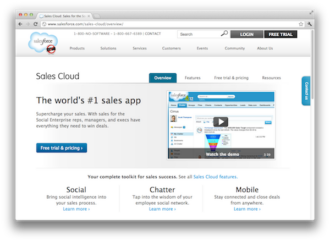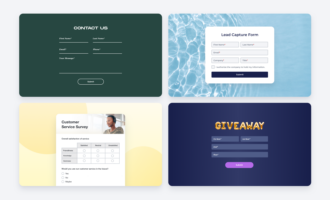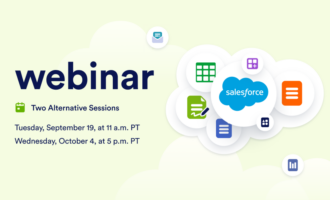Are you ready to grow your business using the world’s most popular customer relationship management (CRM) platform?
Before you can harness the power of Salesforce, it’s important to understand how it works. At its core, Salesforce uses a data model that consists of different object types to store information, including standard, custom, and external objects.
In the following guide, we’ll focus on standard objects in Salesforce: what they are and how to create records for and map fields to them. With that knowledge, you’ll be one step closer to using these capabilities to better structure, access, and manage your critical customer data in Salesforce.
How standard objects in Salesforce work
Standard objects in Salesforce are prebuilt objects that allow you to store relevant information in default fields like name, phone, and email. You can think of standard objects in Salesforce as database tables. Each column is a field, and each row is a record.
Because you can use standard objects in Salesforce out of the box, they’re an easy way to get started. Some of the most common types of standard objects in Salesforce you may encounter include
- Account: an organization or person you do business with
- Contact: an individual person associated with an account
- Lead: a potential customer
- Opportunity: a potential sales deal
- User: a user in your organization
- Asset: an item of commercial value, such as product sold by your company to a customer
- Case: a customer issue or problem
While you can customize the labels and tabs for standard objects in Salesforce (e.g., renaming “Accounts” as “Opportunities”), you can’t remove the objects from the system or delete their mandatory fields.
How to create new records in standard Salesforce objects
Records are the individual instances of data for a standard object in Salesforce. For example, if your standard object is Contact, the records would include each individual contact you create — like John Doe or Jane Smith.
Here are the steps to create records in standard Salesforce objects:
- Log into the Salesforce platform.
- Open App Launcher, then select the standard object type. For example, if you want to create an account record, click Accounts.
- Click New.
- Select a record type if prompted.
- Enter the values in the fields.
- Save your changes.
- Follow the same process for creating new records of any standard object type.
How to map custom fields in Salesforce
Custom fields in Salesforce allow you to add additional fields beyond the default ones to store unique data for your business. For example, you may create a “Customer Satisfaction Score” custom field in the Accounts object to track satisfaction ratings for each customer.
When you map custom fields, you link two fields from different objects so their values sync and stay up to date. With field mapping, it’s possible to automatically sync a custom field in your Contacts object with a value from a custom field in a related Accounts object.
Before you can start mapping, you’ll first need to create the custom fields:
- Open Object Manager.
- Choose the object.
- Click Fields & Relationships and then New.
- Fill out the fields, including Field Label, Field Name, and Values.
- Save your changes.
Once you’ve created your custom fields, here’s how to map them:
- Open Object Manager.
- Click Fields & Relationships.
- Click on Map Fields in the top right corner.
- Choose the object you want to map the field to, then select the custom field from the dropdown menu.
- Click Save.
How to power up your Salesforce capabilities with Jotform
Standard objects in Salesforce provide the building blocks for capturing critical business data on the platform, while custom fields bridge the gap when you need to store additional information. By combining both, you can customize Salesforce to meet your business needs — but don’t stop there.
To level up your lead generation and sales process, consider integrating Jotform with Salesforce. Jotform is an online form builder that allows you to easily create customized forms to collect data from customers and prospects.
By using Jotform within Salesforce, you can create forms that map directly to Salesforce objects and fields. This allows you to seamlessly transfer data you’ve collected with Jotform directly into Salesforce records with just a few clicks — no manual data entry needed. Learn more here.
Photo by LinkedIn Sales Solutions on Unsplash































































Send Comment: